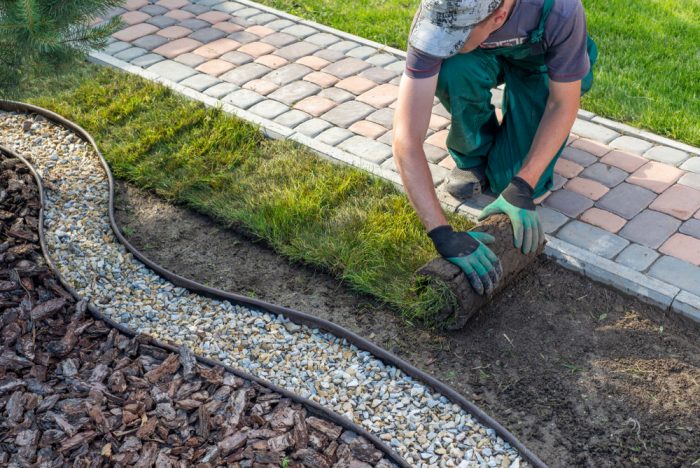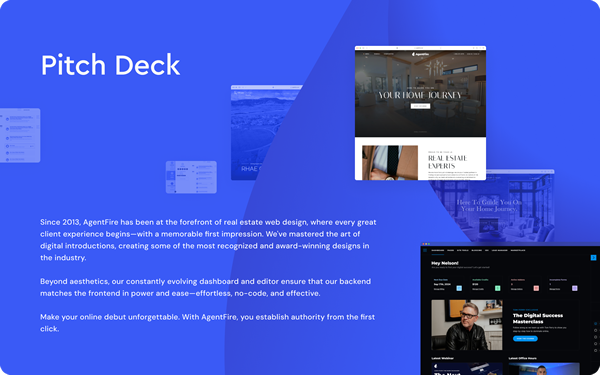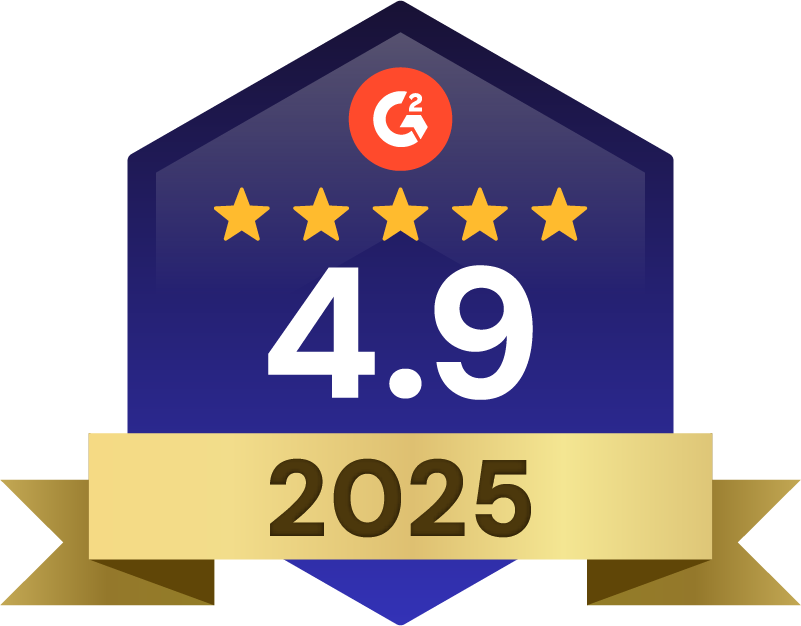Unlock the secrets for a compelling newsletter with these 44 customizable real estate newsletter topics. Next stop: Elevating your newsletter game and connecting with your audience effectively!
Email Marketing
Your real estate newsletter is one of the most direct ways to connect with your audience. In fact, email marketing still reigns as king in digital marketing ROI, making your newsletter a valuable tool for building trust, showcasing expertise, and inspiring both buyers and sellers to take action. But to truly stand out, it’s essential to deliver content that’s both engaging and strategically organized.
In this article, you’ll find a concise, high-impact approach to crafting your newsletter. We’ve handpicked the 29 most unique and beneficial ideas to keep your message fresh and relevant. Follow this structure, and you’ll have a newsletter that your network actually wants to open and read.
- What Should I Include in My Real Estate Newsletter?
- 29 Must-Have Real Estate Newsletter Ideas
- Real Estate News and Market Trends
- Frequently Asked Questions
- Wrapping Up Your Real Estate Newsletter
What Should I Include in My Real Estate Newsletter?
A great real estate newsletter—also known as a property newsletter or realtor newsletter—covers a wide range of topics that resonate with buyers, sellers, and even past clients. Since each group has different priorities, it’s key to segment your messaging or at least include dedicated content blocks for each audience type. This not only boosts engagement but also helps you stand out from other real estate agent newsletter ideas.
- Buyers: typically want financing tips, fresh listings, and open house highlights.
- Sellers: look for effective staging strategies, accurate guidance on current market conditions, and tips for maximizing their home’s value.
- Past Clients: appreciate local community updates, property tax reminders, or maintenance advice to protect their investment.
As you develop your newsletter, include three essential content elements to ensure it’s both informative and engaging:
- Timely Local News & Market Updates: Keep subscribers informed about property values, mortgage rates, or community events that can influence buying and selling decisions.
- Educational Tips & Tricks: Help your audience navigate the real estate process, from saving for a down payment to selecting reputable contractors.
- Visual Highlights & Success Stories: Showcase upcoming listings, just-sold properties, or before-and-after transformations that illustrate your expertise and inspire readers.
Finally, don’t forget to add a personal touch. Share a brief anecdote from a unique showing or a client’s success story—humanizing your brand makes readers feel more connected on a personal level.

29 Must-Have Real Estate Newsletter Ideas
We rounded up the top 29 real estate newsletter topics you can mix and match. Group them by relevance, or schedule them seasonally to keep content fresh. Remember, your end goal is always to engage your clients while showcasing your market expertise in each property newsletter you send out.
Showcasing Properties & Community
1. Open House Highlight
Draw attention to upcoming or recent open houses. Offer practical details such as square footage, number of bedrooms, and standout features. Encourage potential buyers to RSVP by including a link to a sign-up form or an online scheduler. For an extra touch, share behind-the-scenes stories like how the seller prepared the house or any unique challenges you overcame.
2. Focus on the Neighborhood
Position yourself as the local expert by discussing schools, entertainment options, and community events. Include quick stats (e.g., walkability scores or average home prices). To create more engagement, share personal anecdotes or client testimonials showcasing why they love this neighborhood.
3. Local Business Spotlight
Collaborate with a nearby café, boutique, or mom-and-pop shop. Interview the owners or provide a special coupon code exclusively for your newsletter subscribers. This not only benefits local businesses but also reinforces your commitment to community building—your clients will appreciate the insider knowledge.
4. Just Sold Listings
Showcase recent success stories to highlight proven results. Include a short summary of how you helped the seller achieve top-dollar or navigated an unusual complication. Share listing photos or even a brief testimonial from the happy seller. This reassures potential clients that you’re skilled at delivering results.
Seasonal & Lifestyle
5. Holiday Themes
Use the holidays to create a memorable newsletter. Instead of generic greetings, provide holiday décor tips, local event calendars, or even a charity spotlight. If you can tie in real estate—like “4 Ways to Warm Up Your Curb Appeal This Winter”—you’ll add real value during the festive season.

6. Seasonal/Quarterly Touch Base
Send a newsletter each season or quarter with fresh market insights, local community news, and any upcoming real estate trends. Consider including a quick Q&A section or a “Top 3 Tips This Spring” feature to give your audience something actionable every time.
7. Safe-Proofing the Home for Kids & Pets
Offer simple, proactive steps to protect children and pets in the home. For instance, discuss which materials are pet-friendly or how to install safety gates without damaging walls. This type of lifestyle content often boosts readership because it’s beneficial for a broad audience.

Building Credibility & Expertise
8. Business Updates
Keep your subscribers in the loop about your real estate journey: new certifications, team members, or noteworthy partnerships. Explain how these developments make you a stronger agent. Whenever possible, share real-world examples or testimonials illustrating how these updates translate into client benefits.
9. Break Common Home Buying & Selling Myths
Educate and reassure nervous buyers or sellers by debunking myths about down payments, open houses, or negotiating tactics. Present real-world scenarios (“Yes, you can still buy with less than 20% down!”) and position yourself as the resource for honest, reliable advice.
10. How-Tos
Offer step-by-step guides on specific tasks like preparing for a home inspection, remodeling a kitchen on a budget, or understanding closing costs. Include mini-checklists alongside each guide, and whenever possible, reference local contractors or services you trust.
11. Real Estate FAQs
Gather the questions you hear most often—whether about commissions, appraisals, or mortgage rates. Answer them in a concise, reader-friendly format. This not only demonstrates your expertise but also serves as an easy reference you can direct future clients toward.
12. Interview with an Industry Pro
Collaborate with mortgage brokers, home inspectors, or interior designers to provide readers with well-rounded insights. Consider doing a brief podcast-style Q&A or written interview. As always, focus on practical takeaways—like “Top Questions to Ask Your Mortgage Lender.”
Financial & Market Insights
13. Tips to Save Up for a Home
Offer strategic yet realistic advice on budgeting, improving credit scores, and setting financial goals. You can even include a downloadable spreadsheet or a link to a mortgage calculator. This content resonates with both first-time buyers and repeat clients looking for ways to optimize their finances.
14. Buy vs. Rent Calculations
Help uncertain consumers do the math by outlining monthly cost comparisons, potential equity growth, and possible tax benefits. Make this interactive if you can—offer a quick form where readers can plug in their own figures for a custom snapshot.
15. Loan Pre-Qualification Info
Explain the difference between pre-qualification and pre-approval, highlighting how each can strengthen a buyer’s position in negotiations. Include tips on assembling financial documents, improving credit, and selecting lenders who offer competitive options.
16. Local Market Data
Demonstrate your in-depth knowledge by showcasing recent shifts in home prices, average days on market, and inventory levels. Simplify it: use easy-to-read charts or bullet points. Explain how these numbers might affect buyers and sellers—this cements you as the local market authority.
Engaging & Interactive Elements
17. Social Media Roundup
Direct newsletter readers to your most popular social media posts. For instance, embed an Instagram reel featuring a “Behind the Scenes of a Listing Photo Shoot” or a quick TikTok showing “How to Apply for a Mortgage.” Make sure to invite readers to follow you on their favorite platform.
18. Polls & Quizzes
Use free tools (like Google Forms) to create mini-surveys on topics such as “What’s Your Biggest Concern About Buying?” or “Which Home Upgrade Do You Value Most?” This interactive content not only engages readers but also gives you valuable insights into your audience’s preferences.
19. Relocation Resource Guide
Draft a targeted guide for clients moving in or out of your area. Share recommendations for moving companies, utility setup instructions, and a rundown of essential services (DMV, gyms, daycare centers, etc.). This kind of practical help often earns you repeat and referral business.
20. Home Staging Tips
Offer simple, budget-friendly ways to stage a property, from decluttering and rearranging furniture to increasing curb appeal. Before-and-after photos can be especially effective. If you work with a professional stager, consider showcasing their expertise through a brief case study or interview.
Home Maintenance & Renovation Insights
Buyers, sellers, and current homeowners all benefit from proactive home care and improvement tips. This angle helps you stay in touch with former clients, attracts new buyers who want to maximize their future property value, and supports sellers looking to prep their home for listing.
21. Seasonal Home Maintenance Checklists
Devote one section of your newsletter to “Quarterly Home Maintenance Must-Dos.” Break it down by season: for example, spring might include gutter cleaning and landscaping tasks, while winter focuses on insulating pipes or sealing drafts. Simple checklists make it easy for readers to take small, practical steps.

22. DIY Renovation vs. Hiring a Pro
Some home projects are perfect for DIY enthusiasts, while others require a contractor. Offer advice on how to decide which route to take, estimate potential costs, and share links to licensed professionals you trust. You’ll establish credibility as a knowledgeable, homeowner-friendly resource.
23. Highlighting Cost-Effective Upgrades
Cover the top three or four high-ROI improvements like kitchen cabinet refacing, fresh paint, or energy-efficient window updates. This helps both buyers and sellers understand where to invest renovation dollars wisely—especially if they’re recycling or repurposing materials for a more eco-friendly approach.
Legal & Financial Preparedness
Real estate transactions are often fraught with paperwork and legal complexities. Offering clarity on these topics demonstrates that you care about protecting your clients’ interests, going beyond just finding or listing homes.
24. Understanding Closing Costs
Many buyers—especially first-timers—feel overwhelmed by closing costs and hidden fees. Demystify the process by breaking down each expense, such as loan origination fees, title insurance, and escrow deposits. Provide real-world examples to make it easy to follow.
25. Preparing Key Documents
Buyers often ask, “What documents do I need for a mortgage?” or “Which forms should I have as a seller?” Dedicate a short section to the crucial documents—like pay stubs, W-2s, or homeowner’s insurance—and how to organize them for faster loan approvals or smoother negotiations.
26. Estate Planning & Real Estate
While not everyone wants to think ahead about legal matters, explaining the basics—like how property deeds interact with wills or trusts—can be invaluable. Invite a local estate attorney for a brief Q&A. Readers will appreciate having a reliable starting point without feeling overwhelmed.
Client Appreciation & Referral Strategies
Real estate thrives on relationships. By highlighting gratitude for your existing clients and encouraging them to spread the word, you create a community around your brand. This approach also presents a friendly, human touch that goes a long way in building trust.
27. Client Spotlight or Success Story
Feature a recent buyer or seller who had an interesting experience. Perhaps they overcame a tight budget with a creative financing solution or discovered a hidden gem in a competitive market. Share a few “lessons learned” to inspire and educate others.
28. Referral Rewards or Client Events
Include a gentle prompt for referrals, like “Know someone searching for their next home? Let’s connect!” Host small events—like a summer BBQ or holiday mixer—for past clients and encourage them to bring a friend. Recap the event in your next newsletter with photos to spark continued engagement.
29. “Community Champions”
Recognize members of the local community who make a difference—for example, a teacher who just bought their first home or a small business owner who supports local charities. This highlights your commitment to the neighborhood, encourages social sharing, and reflects well on your brand.
Real Estate News and Market Trends
Real estate is constantly evolving, and it’s key to keep your clients in the loop—whether they’re reading your realtor newsletter, property newsletter, or general real estate newsletters. In fact, proactively providing market updates demonstrates your expertise and helps your audience make confident decisions. By integrating timely insights into each newsletter, you’ll set yourself apart from other agents who might only focus on property listings.
Don’t feel compelled to overload subscribers with daily statistics. Instead, offer monthly or quarterly snapshots that highlight both macro and micro factors:
- Macro: National housing policy changes, interest rate shifts, or broader economic indicators.
- Micro: Neighborhood-level trends, hyperlocal data like the rise of new businesses, or average time properties in your region sit on the market.
A simple way to keep this content engaging is to include small charts or infographics that quickly summarize key points. Many free online tools allow you to create easily digestible visuals that make data more appealing.
Remember, this is also an opportunity to position yourself as a trusted advisor. By showing that you understand both the big-picture market and the nuances of your local area, you become the go-to resource for accurate, up-to-date real estate information.

Frequently Asked Questions About Real Estate Newsletters
How do I promote myself as a new realtor?
Leverage your newsletter to highlight your unique approach and success stories. Offer valuable content—like how-to guides—and use social media and community events to drive people to subscribe.
How can I measure the success of my newsletter?
Consider metrics like open rate, click-through rate, and conversions (e.g., someone responding to book a consultation). Tracking these helps you see which topics resonate most, so you can tailor future newsletters accordingly.
How do I automate my real estate newsletter?
Tools like Mailchimp or ActiveCampaign can help you set up automated email sequences, freeing you to focus on crafting high-value content. You can schedule weekly, monthly, or quarterly sends and segment your audience for more personalized messaging.

Wrapping Up Your Real Estate Newsletter
Your newsletter is more than words on a page—it’s your chance to establish trust, display your market knowledge, and keep your name top of mind. Whether you’re focusing on testimonials, sharing eye-catching listings, or explaining the latest mortgage changes, focus on content that resonates with your audience’s needs.
And remember: consistency is key. Even if you choose to send a quarterly roundup, be sure it’s packed with relevant, high-quality info. By staying persistent, you’ll maximize your ROI and keep your audience looking forward to your next update.
If you’re ready to take your real estate business to the next level, book a demo with us today.







